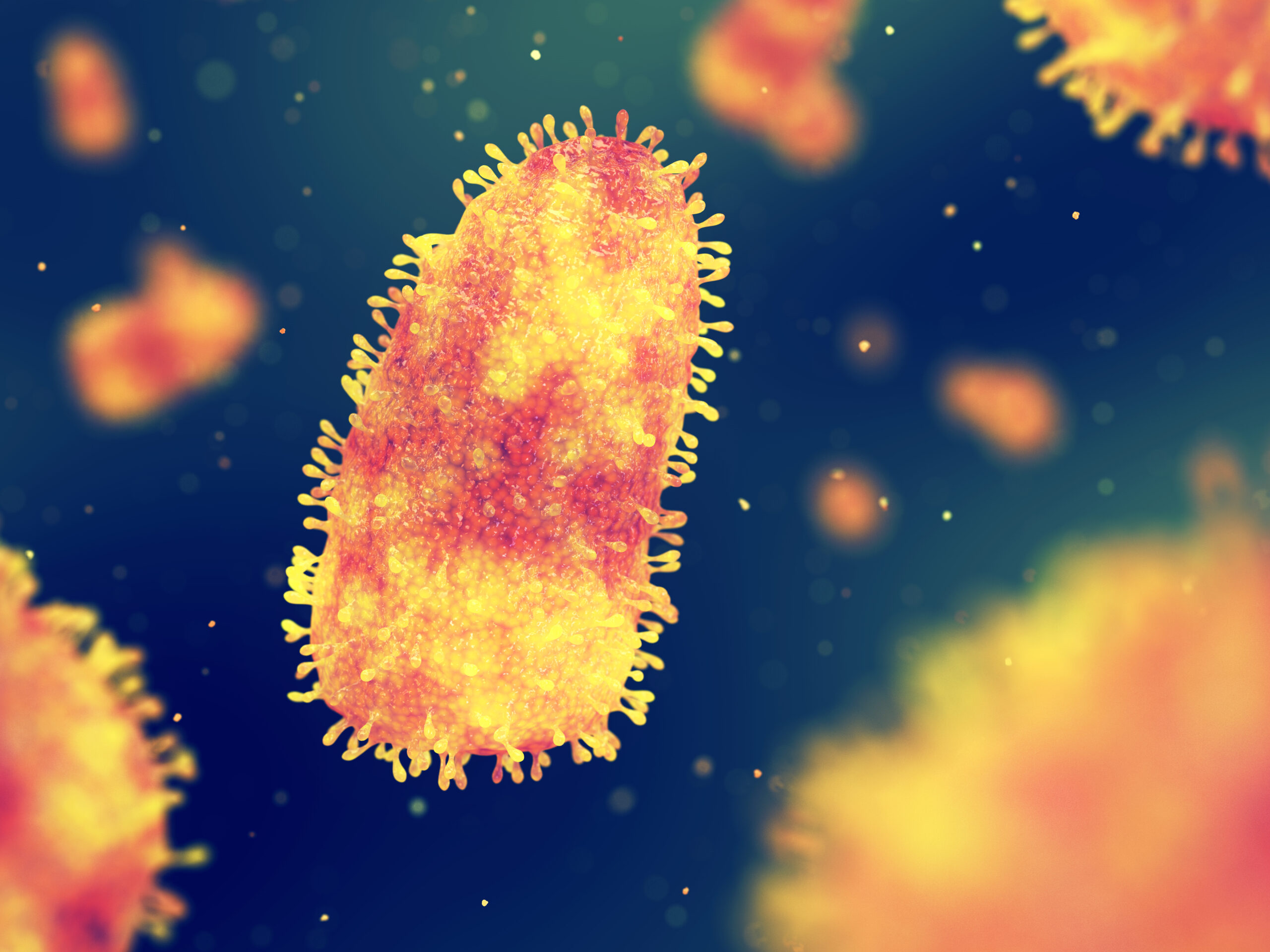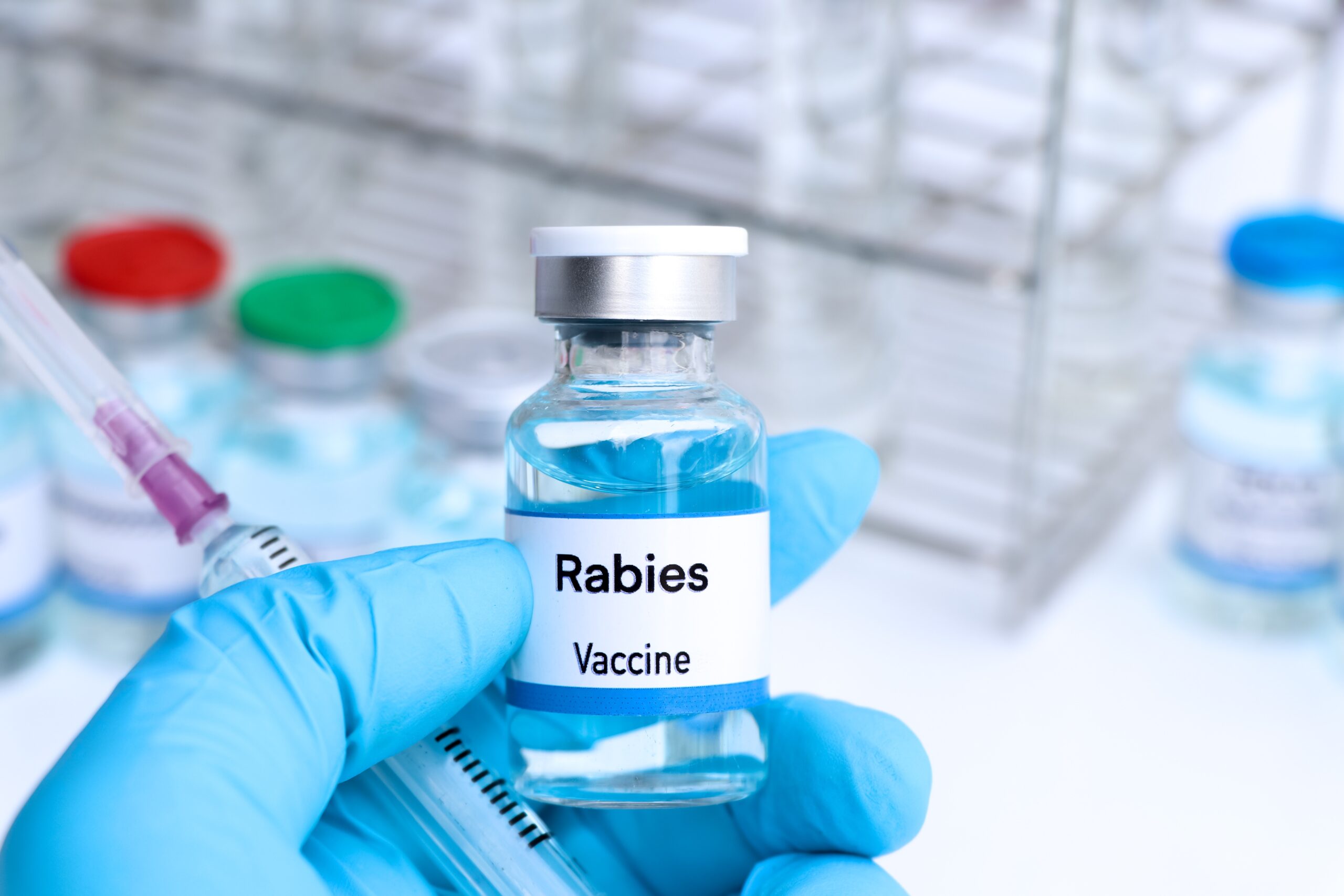Rabies is a fatal zoonotic disease that causes inflammation of the brain. Zoonotic means a disease that is transmitted from animals to humans. The cause of the disease is a viral infection, which most often occurs through the bite of a human by an infected animal, a mammal of various species (dog, cat, bat), or less often through the animal's saliva, which gets on the mucous membranes or damaged skin.
When symptoms of the disease occur in a person, the disease is almost 100% fatal.
According to the World Health Organization, around 60,000 people die from rabies every year in the world. Almost all cases of rabies in humans result from bites by infected animals. In developing countries, including India and China, almost all human cases are caused by dog bites. In developed countries (such as the United States), bats are also an essential source of the disease. The incubation period of the disease is, on average, 1 to 3 months, but it can be up to 12 months.

Rabies is present on almost all continents (expert for Antarctica). Human deaths from rabies almost entirely occur in Asia and Africa. Effective post-exposure prophylaxis (vaccines and immunoglobulins) for this disease exists. However, it is often not accessible to people from poor populations. Yearly, up to 30 million![]() people worldwide receive post-exposure prophylaxis, which successfully prevents deaths from the disease.
people worldwide receive post-exposure prophylaxis, which successfully prevents deaths from the disease.
Rabies can be caused by many different strains of viruses from the Lyssavirus genus![]() . These are viruses containing a single-stranded RNA chain that encodes five proteins.
. These are viruses containing a single-stranded RNA chain that encodes five proteins.
People mostly get infected by rabies through a bite or scratch from an infected animal. A possible route of infection may also be the contact of the infected animal’s saliva with human mucous membranes, such as conjunctiva or mouth. Most often, dogs are the source of virus transmission, though, in America, bats are responsible for most infections.
It extremely rarely happens that the virus is spread through contaminated aerosol or infected organ transplant. Human-to-human transmission is theoretically possible, though it has never been documented.
After entering the human body, the rabies virus penetrates nerves and, in time, reaches the brain. Infection happens in several phases. These include:
The incubation period typically spans from several weeks to a few months, though it is uncommon for this stage to persist for up to a year. It tends to be briefer when the virus finds an entryway into the human body through areas rich in nerves and closer to the brain – such as the facial region. Scientists hypothesize that the viral invader remains at its entry point during this initial phase. This underlines how critical thoughtful caregiving around wound management can be.
Next, the virus penetrates the nerves and progresses toward the spinal cord and brain at approximately 50 to 100 millimeters per day![]() .
.
After penetrating the central nervous system, the virus spreads in the brain tissue and through nerves. It reaches salivary glands, where it multiplies and is excreted in the saliva of infected animals.
The rabies virus progresses through nerve cells until it reaches brain tissue. The prodromal phase begins during the virus's travel through the nervous system.
The disease begins with non-specific warning symptoms: fever, general malaise, headaches, nausea, and vomiting. Most people infected by the virus experience sensory disturbances, pain, or itching around the injury site (virus entry). By the time these symptoms occur, the wound is usually already healed. The prodromal phase lasts 2-10 days![]() , and if the disease reaches this phase, no effective treatment can be used for the disease.
, and if the disease reaches this phase, no effective treatment can be used for the disease.
In humans, there are two forms of the acute neurologic phase of rabies: furious, which occurs in most people, and paralytic. Furious rabies resembles other viral encephalitis (brain inflammation). It manifests with fever, confusion, hallucinations, agitation, uncontrollable muscle spasms, hyperactivity, and convulsions.
Hallucinations tend to come and go, often followed by hyperactivity and confusion. Then, a wave of mental lucidity sets in for a while. But as the disease advances, these moments of clarity diminish further and faster. Aspects like drooling, excessive perspiration, and pupil widening are also possible symptoms during the acute neurological stage.
When the disease reaches the brainstem and the brain, the symptoms of hydrophobia![]() occur, which in the past was considered essential to rabies. Hydrophobia means involuntary, painful spasms of the diaphragm and other respiratory, laryngeal, and throat muscles when swallowing fluids.
occur, which in the past was considered essential to rabies. Hydrophobia means involuntary, painful spasms of the diaphragm and other respiratory, laryngeal, and throat muscles when swallowing fluids.
Excessive drooling and swallowing difficulties lead to the “foaming at the mouth” symptom. An infected person dies after a few days of the acute neurologic phase.
In some people, the neurologic phase looks different. Paralysis symptoms dominate, which is the weakening of the muscles. In this case, symptoms of the disease, such as hydrophobia and hallucinations, are not present.
This form of disease begins with symptoms of muscle weakening, which then starts in the bitten limb (the virus entry site). From there, muscle weakening spreads gradually and leads to the paralysis of all the limbs and facial muscles.
People affected by paralytic rabies![]() tend to survive a few days longer than in the case of furious rabies. Nonetheless, also in this case, the disease leads to death.
tend to survive a few days longer than in the case of furious rabies. Nonetheless, also in this case, the disease leads to death.

When you are infected with the rabies virus, you don’t get any symptoms in the incubation phase, which usually takes a few weeks to a few months. Next, when the disease reaches the prodromal phase, the infected person gets flu-like symptoms. Symptoms occurring during the prodromal phase include:
When the virus reaches brain tissue, brain inflammation (encephalitis) begins. During that phase, neurological symptoms begin, which can manifest in the form of furious or paralytic rabies. Furious type of the disease symptoms include:
Excessive drooling combined with swallowing problems results in the symptoms of “foaming at the mouth.” Symptoms of the furious form of rabies usually come and go with periods of mental clarity.
Paralytic rabies symptoms include:
Rabies used to be known as hydrophobia because it appears to cause a fear of water – intense spasms in the throat occur when trying to swallow fluids, and even the thought of drinking water can cause those symptoms. The spasms happen due to the virus’s impact on the nervous system.
It is essential not to wait for the symptoms to get tested for rabies. The disease is highly lethal, and once the symptoms appear, there is almost no chance of survival. That’s why it’s crucial to seek medical attention if you have been bitten or scratched by an animal you don’t know that has been vaccinated. Your doctor may ask how you got hurt and what kind of animal bit you. Additionally, tests for rabies that may be performed include:
If an animal bites a human or otherwise exposes them to potential rabies infection, it may be necessary to test it for the disease. An animal suspected of having the virus must be euthanized to test it for the disease. The test involves taking brain samples from at least two brain locations. It takes approximately 2 hours, but the brain samples must be shipped to a veterinary diagnostic laboratory or a state public health for testing. In the United States, animal rabies test results are usually done within 24 to 72 hours after the animal is euthanized.
In the US, over 120,000 animals are tested yearly for rabies, and approximately 6% are tested positive. Testing an animal is not always necessary and depends on the risk level that it might be rabid. After potential exposure, consulting the local health office can help define the best proceeding.
There is no effective cure![]() for rabies once the symptoms appear. Contact your doctor immediately if you have been bitten or scratched by an unknown animal. Even if you’ve been vaccinated, it’s essential to consult a healthcare specialist.
for rabies once the symptoms appear. Contact your doctor immediately if you have been bitten or scratched by an unknown animal. Even if you’ve been vaccinated, it’s essential to consult a healthcare specialist.
Clean the wound with soap and water or per the doctor’s recommendations. Your healthcare specialist will give you vaccination shots and antibody treatments to prevent the virus from causing infection.
Rabies can be prevented. First, staying away from wild animals and keeping your pets monitored while out prevents exposure to the virus. Remember to keep all your pets’ vaccinations up to date to protect them from getting infected by other animals. If a person is exposed to the virus, they can get post-exposure prophylaxis.

Proper post-exposure prevention can help avoid the disease in almost everyone at risk of rabies. Keeping yourself safe after a possible exposure to rabies involves two primary steps: wound hygiene and immunization.
The first defense is cleaning the site of contact — for instance, where you've been bitten or scratched, it might also be areas with salivary contact. It's best practice to thoroughly clean these places with soap and water, followed by an effective disinfection regime. Your next step should center around getting vaccinated against this disease while securing treatment with human rabies immunoglobulin if needed.
The decision to administer the post-exposure vaccine and possibly immunoglobulin depends on the type of contact with the animal and the injuries, as well as on the animal's health condition and the possibility of its identification. It is usually impossible to test an animal that has exposed a human to a disease, so immunization is administered just to be sure.
In the case of contact with an animal but without wounds or salivation of healthy, undamaged skin, post-exposure prophylaxis is not used.
Rabies immunoglobulin provides immediate action of virus-neutralizing antibodies. Your protective antibodies are produced in response to the vaccine. The rabies vaccine produces protective antibodies that neutralize the virus after up to 10 days. The antibodies then persist for several years.
In developed countries, including the United States, only isolated cases of rabies have been reported due to vaccinations of animals and people. The incidence of human rabies in the United States is very low because effective post-exposure prophylaxis is used in up to nearly 60,000 people exposed to potentially rabid animals each year. Post-exposure rabies vaccinations involve starting vaccination according to the schedule on the day of exposure. Subsequent vaccine doses are administered on days 3, 7 and 14.
Although the chances of getting rabies in developed countries such as the United States are low, some people are at higher risk due to their occupation or traveling to the parts of the world where the disease is more common.
In Africa and Asia, where rabies is transmitted mainly by dogs but also by monkeys, bats, and, less often, other mammals, the disease causes the deaths of about 50,000 people a year. Due to the risk, preventive, pre-exposure vaccinations should be necessary for people exposed to rabies professionally (e.g., veterinarians, hunters, zoo workers) or through tourism and other activities, including people traveling to areas of frequent occurrence of the disease or people spending time in caves.
The basic vaccination schedule consists of 2 doses of vaccine administered as recommended on days 0 and 7. Vaccinations are safe and virtually painless. Modern vaccines are administered in the arm.
You should see your healthcare provider if you get exposed to the disease:
Suppose your job involves contact with wild animals, or you plan on traveling to countries where rabies is common and healthcare is not easily accessible. In that case, you should discuss the possibility of getting vaccinated for rabies with your doctor.
Seek emergency medical help in the emergency room if you’ve been deeply bitten or wounded by an animal.